Introduction
There is no perfect handgun. We would all like something that’s light, compact, and easy to carry, has enough power to stop an assailant in his tracks, and holds an infinite amount of ammunition. Unfortunately this gun does not exist. Any firearm is a series of compromises and tradeoffs. One gun might be very powerful, but it’s large, heavy, and doesn’t hold much ammo. Another might be small, light, and easy to carry, but with a low ammunition capacity and difficult to shoot well. The key is to select the right set of tradeoffs for your application.
If you’re buying your first handgun for self-defense, it needs to serve two purposes: it should be suitable for defensive use and it also needs to be a good learning and training tool. I see many people who either buy their first handgun either without giving any thought to the latter, or who simply don’t know enough about what makes a good training handgun. They often get frustrated and come to the conclusion that learning to shoot a pistol is a lot more difficult than it really is. The obstacle isn’t their own abilities, or even the general difficulty of pistol shooting, it’s the tool that they’ve chosen.
My bottom-line recommendation for most people is to buy a compact or full size semi-automatic pistol without a manual safety or decocker in 9mm. If the previous sentence sounded like greek to you, read on for an explanation of what all that meant. If you understood it and think I’m wrong, read the rest of this chapter for an explanation of why I believe this is the best choice.
Semi-Automatic Pistol
A semi-automatic pistol is one that uses the energy of firing a round to eject the spent case and feed a new round from the magazine into the chamber.
Most semi-automatic pistols that are relevant for self-defense are recoil operated. When you fire a round the force of the recoil pushes the barrel and slide back. The barrel will stop after traveling a short distance, but the slide keeps moving to the rear. As it does so, it drags the fired case of the previous round out of the chamber and ejects it out of the gun. Once the slide has traveled as far to the rear as it can, the recoil spring forces it forward. As it travels forward the underside of the slide runs up against the back of the next round in the magazine, pushing the round forward and into the chamber. Once the slide has traveled all the way to the front, the gun is in battery and ready to fire again. See the video below for an animated illustration of the process:
While most self-defense pistols are recoil operated, there are a few other operating systems that you will see in self-defense pistols. Some pistols, generally those firing low powered cartridges, use blowback operation. This is similar to recoil operation, described above, but the barrel is fixed and the slide is pushed back using the pressure against the cartridge case rather than the recoil. There are a few other methods of operation for semi-automatic pistols, including gas operated, and roller or gas delayed blowback but these are very uncommon, each appearing only in a small number of designs.
Semi-Auto Action Types
Semi-automatic pistols can be grouped into several categories, based primarily on their trigger mechanisms.
Single Action
In a single-action semi-automatic pistol, the trigger only has one job. That is to release the already-cocked hammer, initiating the firing sequence. Because it only has one job, the trigger can be very light and short (it does not require much force to pull it and you do not have to pull it very far). Both of these factors are a boon to accuracy, but they are somewhat problematic from a safety perspective. Because the trigger doesn’t require much force to pull and doesn’t have to be pulled very far, it is potentially quite easy to pull the trigger accidentally.
Accordingly, most single-action semi-autos are equipped with a manual safety. This is a lever or switch somewhere on the gun that mechanically keeps the gun from firing until it is disengaged. Generally, the safety will remain in the “safe” position while the gun is in the holster. As the shooter draws the gun, they move the safety to the “fire position”. When they are done shooting and ready to reholster, they move the safety to the “safe” position again to avoid the possibility of the gun discharging unintentionally as they put it back in the holster.
The problem with single-action semi-autos is the need to disengage the safety on the draw. I have seen highly skilled shooters, who have practiced disengaging the safety on the draw thousands or tens of thousands of times fail to disengage the safety when placed in a stressful situation, even if it’s just in training. Second, for a new shooter to get up to that, fallible, level of skill requires a lot of time and effort. The time and effort spent learning to disengage a manual safety is time and effort that could better be spent on other skills.
The classic example of a single-action semi-automatic pistol would be John Browning’s designs: the 1911 and the Browning Hi Power.

Double Action
In a double-action semi-automatic pistol, the trigger has two jobs. As you pull the trigger to the rear it raises the hammer to the cocked position. When the trigger gets all the way to the rear, it releases the hammer, initiating the firing sequence. Because it needs to raise the hammer, opposed by a fairly stiff spring, the trigger is generally long and fairly heavy (it has to be pulled a longer distance and requires quite a bit of force to pull it). The long, heavy trigger pull makes it much less likely that the trigger will be pulled accidentally than on a single-action pistol, so it does not require a manual safety.
If the hammer of a double-action pistol remains down after each shot, requiring the same long, heavy trigger pull for ever round it is called Double-Action Only or DAO. However, in most double-action semi-automatics only the first shot requires the double-action trigger pull. For subsequent shots the cycling of the slide recocks the hammer, giving it a lighter, shorter single-action trigger pull. These are called Double-Action/Single-Action (DA/SA) pistols. The long, heavy first round trigger pull gives you the advantages of a double-action pistol (no need for a manual safety) while the shorter, lighter trigger pull on the second and subsequent shots gives you the advantages of a single-action pistol (easier to shoot more accurately).
With a DA/SA pistol, the user needs some way to lower the hammer and return the trigger pull to double action. Manufacturers have recognized that manually lowering a hammer to decock a pistol is fraught with peril, so almost all DA/SA pistols are equipped with decocking levers. The decocking lever safely lowers the hammer. When you release the decocking lever, it springs back to the firing position, returning the trigger pull to double action. The classic example of a DA/SA pistols with a decocker is the SIG P226 series (the P226 is available in other configurations, but DA/SA with a decocker is by far the most common).

A pistol with a double-action trigger pull is sufficiently safe with just it’s long heavy trigger pull. Nevertheless, some manufacturers have insisted on equipping their DA/SA pistols with a manual safety. Generally, this is integrated into the decocking lever so that moving the lever from the fire position both decocks the gun and engages the manual safety. This is a “suspenders and belt” approach that appeals primarily to bureaucrats who think that gun safety is the product of mechanical devices rather than good training. With this type of firearm it is perfectly fine to move the decocker/safety lever back to the fire position and carry it with the manual safety disengaged, relying on the double-action trigger pull. The classic example of a DA/SA pistol with a decocking/safety lever is the Berretta 92F.
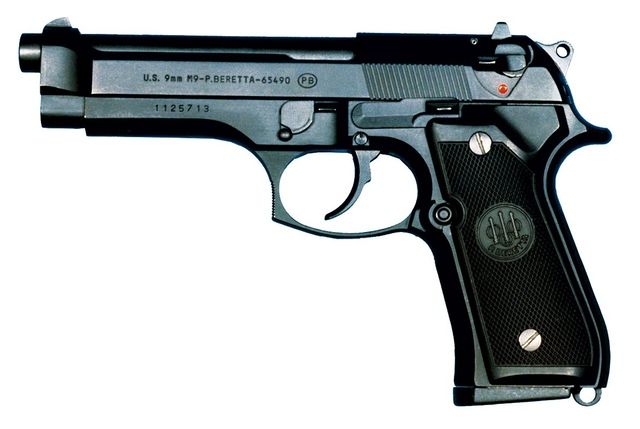
Finally, there are some pistols that leave the choice of action to the user. They have one lever that acts as a safety and a decocking lever, but unlike the pistols described above, the safety and decocking functions can be activated seperately. Generally, if you push up on the lever, it acts like a mechanical safety, putting the pistol on safe while retaining a single-action trigger pull. If you push down on the lever, it acts like a decocker, lowering the hammer and engaging a double-action trigger pull. Thus the user can run it “cocked and locked” as a single-action pistol with a manual safety, or decocked and unlocked, as a double-action pistol without a manual safety. One could also run a gun like this with the hammer decocked and the manual safety, but such a suspenders and belt approach is unnecessary. An example of a “user’s choice” semi-auto would be the HK USP series.
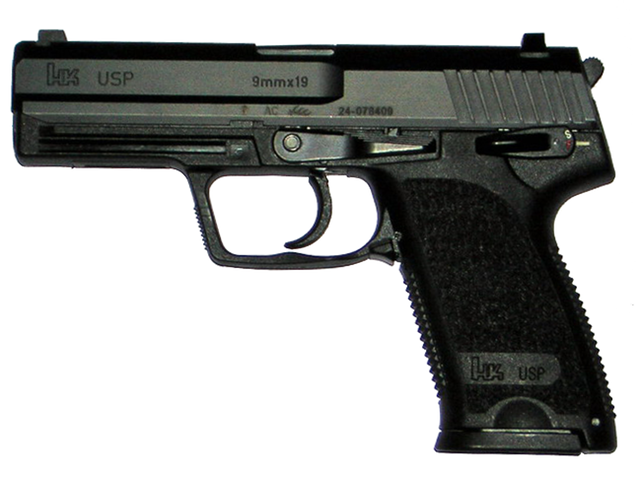
From a gunfighting perspective, a decocking lever is less problematic than a safety because you only have to operate the decocking lever after the fight is over when you’re ready to reholster. This makes a DA/SA gun more reliable under stress than an SA gun with a manual safety. The disadvantage of a DA/SA pistol is the need to learn two seperate trigger pulls: the long heavy double-action pull for the first round, and the shorter, lighter single-action pull for subsequent rounds. With practice you can learn to master both trigger pulls and shoot quite well with a DA/SA gun, but the time and effort required could be spent learning something else.
DA/SA guns with a combined safety and decocker lever are more problematic. If you run the gun with the safety lever engaged you get the disadvantages of both a DA/SA gun and a manual safety. It makes much more sense use the lever only for decocking, manually moving it back to the fire position after lowering the hammer. The danger from doing this comes not from the prospect of an unintentional discharge, but from the possibility that the decocker/safety lever might accidentally get knocked back to the “safe” position, leaving you with a gun that won’t go off when you need it. As you have probably gathered, I am not a fan of this particular system.
A “user’s choice” gun might seem like the best of both worlds, allowing the shooter to choose how he wants to use the gun. This choice is actually rather problematic. Under the stress of a gunfight, you don’t want to be trying to remember what condition you are carrying the gun in today. If you have one of these pistols, I would recommend picking a carry condition and sticking with it. Either always carry with the hammer cocked and the manual safety engaged, or always carry with the hammer decocked and without using the manual safety.
Point and shoot pistols
The third major category of semi-automatic pistols doesn’t really have a standardized nomenclature. Ever manufacturer has their own name of this type of setup. Glock calls it the “safe action”, Springfield calls it the “ultra safety assurance trigger system”, other manufacturers have different names. I call them “point and shoot pistols” (by analogy with point and shoot cameras).
These pistols are in many ways a compromise between the single-action and double-action. Rather than having the trigger pull do either all the work of cocking the gun, as in a double-action, or none of the work, as in a single-action, they split the difference. The hammer or striker spring is partially compressed by the cycling of the slide. Pressing the trigger finishes cocking it and then releases it, starting the firing sequence. This provides a trigger pull that is somewhat longer and heavier than a single-action pistol, but nowhere near as long or heavy as a double-action pistol. Unlike a DA/SA pistol, they have the same trigger pull every time. Unlike single-action pistols, point and shoot pistols do not have a manual safety. The Glock is the classic example of a point and shoot pistol.
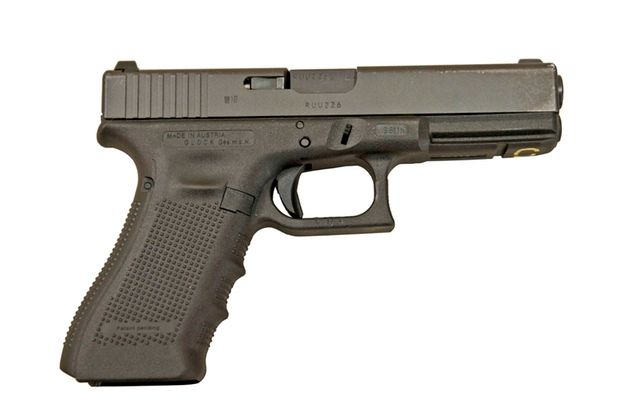
I think that a point and shoot pistol is the best choice for a fighting handgun, particularly for a new shooter. They don’t have manual safeties that can be forgotten under stress, they have an easily managable trigger pull that’s the same every time. This simplifies training and allows new shooters to concentrate more of their time and effort on learning how to shoot and fight with their handgun, rather than on learning how to run the gun itself.
Size
Pistols come in all sorts of sizes. Those suitable for self-defense can be grouped into three broad categories: full size, compact, and sub-compact. Many pistol designs are available in a variety of different sizes, to ensure that no niche goes unfilled.
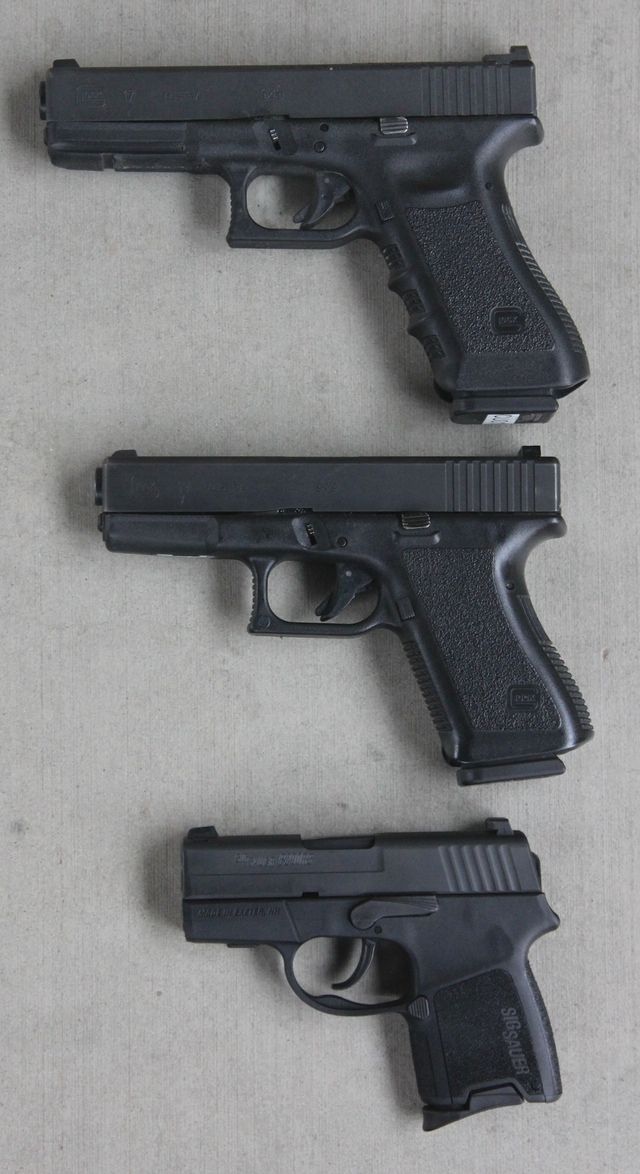
Full size pistols have a barrel in the 4.5-5“ range and a grip that will easily accommodate the entire hand. Some manufacturers will refer to these as “Tactical” models. Examples of full size pistols include the Glock 17, the SIG P226, the Beretta 92, and 5″ versions of the 1911.
Compact pistols have a barrel around 4“ long. The grip is usually shoter than on a full size pistol, but still long enough to accommodate the entire hand (though shooters with larger hands may find it just barely does so). Examples of compact pistols include the Glock 19, SIG P229, and the Springfield XD Service Model. Compact 1911s are often referred to as “Commander” models.
Compact pistols are generally the most popular size, as many people see them as a good compromise between ease of shooting and ease of carry. In the past handgun manufacturers often came out with a full size gun, then shortened the grip and barrel to create a compact variant. Now, many are introducing a design as a compact and then lengthening the barrel to create a full size model (both the S&W M&P and Springfield XD started out as compacts).
Sub-compact pistols are the most varied size category. They range from heavily cut-down versions of full size pistols to tiny “keychain guns”. They generally have barrels of 3.5″ or less. Their most distinguishing feature is a very short grip, so short they leave the pinky finger hanging in space below the gun. This makes shooting these small pistols considerably more difficult. It also substantially reduces their magazine capacity. Many subcompact pistols offer the option of either a pinky rest attached to the magazine that extends below the grip to offer someplace for your little finger to go, or an extended magazine which provides both a place for the pinky and additional ammunition capacity. While they make the gun more shootable and allow it to hold more ammo, these give up the concealment advantages of the shorter grip.
We live in a golden age of small semi-automatic pistols. Ten years ago, most subcompact models were either cut down versions of full size pistols, or cheap unreliable junk. Since then there has been a renaissance of small pistols, leading to a much wider selection of higher quality guns. Individuals looking for a concealed carry gun tend to gravitate towards these very small pistols. They often can’t imagine carrying a full size, or even compact firearm.
The downside of this is that these very small pistols are quite difficult to shoot well. The smaller and lighter a pistol is, the sharper the recoil is going to be. Larger, heavier guns do a much better job soaking up recoil. This is compounded by handgrips that don’t allow you to get a full grip on the gun and narrow frames that concentrate the recoil on a smaller part of your hand. They can be downright punishing to shoot, which leads people to be reluctant to practice with them. This is doubly unfortunate, because you really need more practice with them, in part because the short sight radius (the distance between the front and rear sights) also makes them more difficult to shoot accurately. These difficulties combine to create a substantial obstacle for a new shooter trying to learn how to shoot well.
I recommend either a compact or full size pistol as your first firearm. It will be easier to shoot and a lot less frustrating to learn the fundamentals of handgun shooting. Even if you end up buying a smaller pistol for concealed carry, the larger gun will make good nightstand gun for home defense. However, you may discover with the right holster and clothing you can carry a larger pistol than you thought.
Grip
When we get to the fundamentals of marksmanship in a later chapter, I’m going to tell you that the most important of these fundamentals is your grip. Your grip on the gun is your interface with the firearm; a poor grip will make shooting a lot more difficult than it has to be. I mention this now because process of developing the correct grip begins with selecting the right gun.
The most important characteristic for a proper grip is the gun’s trigger reach: the distance from the backstrap (the back of the handgrip) to the trigger. If the trigger reach is too long, you will have to compromise their grip to operate the trigger.
In a proper grip, the backstrap should be in the web of the hand and the barrel of the pistol should be in line with the bones of the forearm. When the pistol is in this position, it should be easy for the trigger finger to reach the trigger and place the pad of your index finger on it.
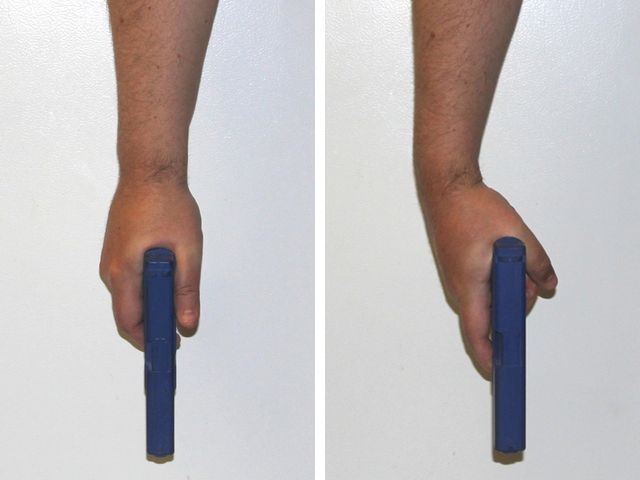
With an excessive trigger reach, you will will not be able to keep the backstrap in the web of their hand and the barrel parallel to the forearm. The backstrap will migrate from the web of the hand towards the second joint of the thumb, taking it out of alignment with the forearm.
A trigger reach so long it requires you to compromise your grip on the gun is the most obvious issue, the most severe, and the hardest to train around. However, a trigger reach which is slightly too long can cause more subtle issues. When you place your finger on the trigger, the pad should be perpendicular to the face of the trigger. This makes it much easier to press the trigger straight back without disturbing the alignment of the pistol. If the trigger reach is too long, a right-handed shooter will tend to push the pistol to the left when operating the trigger.
On the other hand, if the trigger reach is too short, it will lead a right-handed shooter to tend to pull the gun to the left when operating the trigger. Unlike the issues with too long of a trigger reach, this generally shows up towards the end of the trigger pull, rather than right when you place your finger on the trigger.
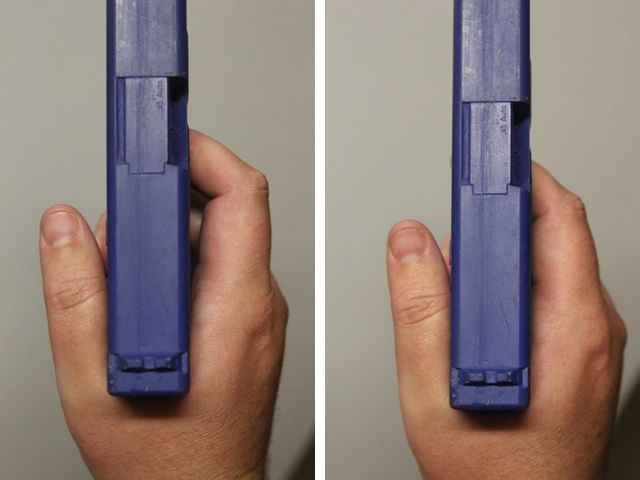
Finally, the only part of the gun your trigger finger should touch is the trigger itself. If the base of your trigger finger presses against the frame of the gun, it can push on the gun as you operate the trigger. Whether or not the base of your trigger finger contacts the frame is a combination of the trigger reach, and the width of the gun’s grip.

Thus far we’ve been talking primarily about difficulties that face people with smaller hands when trying to operate a gun with a larger grip and long trigger reach. However, there are difficulties that can face shooters with larger hands when trying to operate smaller guns. Sometimes there’s just not enough gun to hold on to. In particular, you should be able to fit the base of the palm of the support hand between the fingertips and the base of the thumb of the shooting hand.
Although lack of space for the support hand is not optimal, it’s not as big of a problem as the trigger reach issues described above. If a pistols needs to work for two people with different sized hands (a home defense gun for a husband and wife, for example) then the gun should be sized for the person with the smaller hands. Of course, his and hers pistols are a better solution.
While the trigger is the most important aspect of getting a properly fitting gun, the you need to be able to reach the other controls as well. If the gun has a safety, it must be easy to reach without shifting the grip on the gun. Magazine releases, decocking levers, and slide releases need to be reachable as well, though it is OK if these require some shifting of the grip.
In the past decade or so manufacturers have gotten much better at supporting left-handed shooters. Now almost every design offers some accommodation for southpaws. Generally these accommodations come either in the form of reversible controls, or ambidextrous controls. With reversible controls, a gun can be set up for either a right or left handed shooter, but not both. Generally a gun has to be at least partially disassembled to change it from right-handed to left handed operation. Ambidextrous controls, by contrast, allow operation from either side without any modification.
As a lefty myself I certainly appreciate some attention being paid to left-handed shooters. That said, I don’t think that left handed magazine or slide releases are really all that important. A left-handed shooter can easily adapt to a gun with a right-handed magazine and slide release (and vice versa). Moreover, every shooter should learn how to operate their gun with their non-dominant hand, so unless a gun has fully ambidextrous controls, you’ll be operating the gun “wrong-handed” with one hand or the other. The only control that absolutely needs to be set up for a left-handed user is the manual safety (if a gun has one).
Given how important a well fitting gun is, how do you find the right one for you? Unfortunately, unlike clothing or shoes, there is no system of designated sizes for firearms. The only way to figure out if a gun fits your hands is to try it. At the very least you need to handle a gun you are considering in the store. Optimally, you should shoot a gun before buying it. If you have a friend who owns a gun you are considering, ask them to go out shooting with you. Some shooting ranges offer guns for rent, though these are usually limited to the more common models.
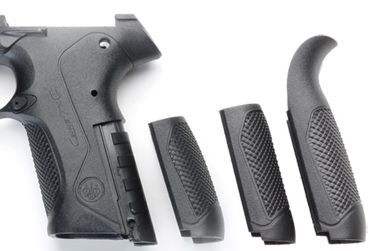
As described above, this is a bigger issue for people with smaller hands. Those with average or large hands will find that most handguns will fit them fine. For those with smaller hands, the good news is that there are more choices available for them than ever before. Many manufacturers have begun offering guns with interchangeable backstraps. These are add-on pieces of varying thickness that attach to the rear of the grip to change the grip size and trigger reach. Notable firearms offering interchangeable backstraps include the Smith and Wesson M&P, the Springfield XDm, and 4th generation Glock pistols. When you see these on display in the store, they usually have the “medium” backstrap installed. If the gun doesn’t feel right to you, don’t be afraid to ask them to install a different backstrap for you to try.
Another option for guns with polymer (plastic) frames is a grip reduction. This involves removing some of the plastic material to reshape and resize the grip of the gun. This is an option for guns that don’t have interchangeable backstraps. Obviously it involves a much greater investment before you can see if you like it, in both the gun and in having the grip reduction done.

If your hands are small enough that even the smallest interchangeable backstrap on a S&W M&P is too large for you, another option is to go with a single-stack magazine. Most pistols today have what is called a double-stack magazine. These hold ammunition it two staggered columns. This allows the magazine to hold much more ammunition, but at the cost of a wider magazine, and thus a wider grip. A single stack magazine holds less ammunition, but allows a much narrower grip. If you have small hands, this may be a good tradeoff. More ammunition is good, but an 8-shooter that you can shoot well is better than a 17-shooter that you are marginal with.
The most popular type of single-stack firearm by far is the classic 1911 design. However I do not recommend these because they have a manual safety (see above). Kahr Arms makes an extensive line of high-quality single stack pistols that are good options for shooters with smaller hands. Many of the small semi-automatics that have proliferated in recent years are single stack guns and have very narrow profiles. As explained above, smaller guns are generally more difficult to shoot. However, for individuals with small hands, getting a gun with a grip that fits their hand may outweigh this. Some of the guns towards the larger end of the sub-compact range like the Walther PPS and S&W M&P Shield are good choices in this situation. If you are getting one of these because you are looking for a gun with a single stack magazine, I would recommend running them with the extended magazines that have a pinky rest to allow a full grip on the gun.
The minutia of handgun grips may seem like a lot of effort to spend on some very minor details. They are minor, but that doesn’t mean they aren’t important. Accurate marksmanship is about getting all the minor details correct.
Revolvers
While many people push revolvers for self-defense they are largely obsolete except for a few niche applications. Because they can chamber more powerful cartridges than semi-automatics, they are useful for defense against dangerous animals. However, these more powerful cartridges do not offer significant advantages against human assailants.
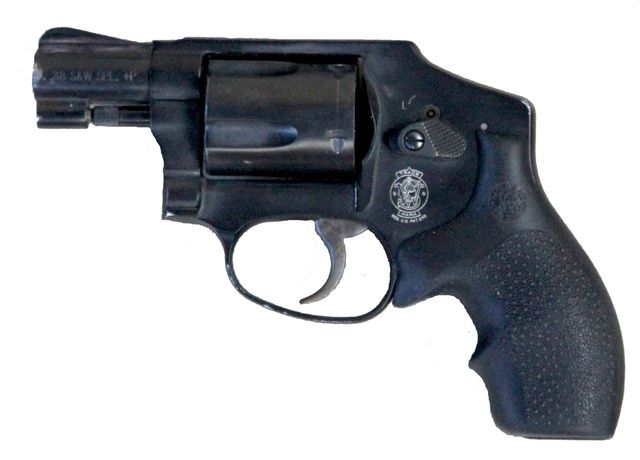
The other main area where the revolver has endured is as a small, discreet carry gun, including as a back-up gun. While the small revolver has been the traditional weapon in this role the recent boom in small semi-automatic pistols (described above) poses a serious challenge to the revolver. The one application where the small revolver is still clearly superior is the jacket pocket gun, since a hammerless revolver can be shot reliably from inside clothing.
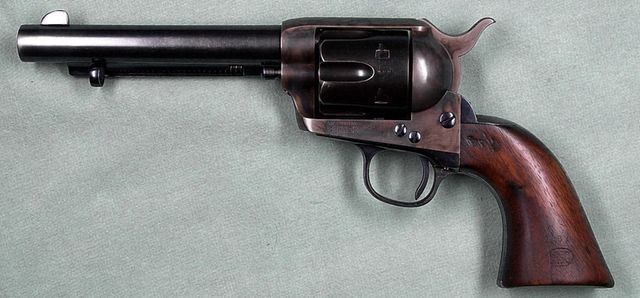
Much like semi-automatic pistols, revolvers come in both single- and double-action varieties. On a single-action revolver, the shooter must manually cock the hammer for every shot. Cocking the hammer also rotates the cylinder, bringing the next chamber into alignment with the barrel. Single action revolvers have a historic charm, but the need to manually cock them for every shot makes them unsuitable for self-defense use.
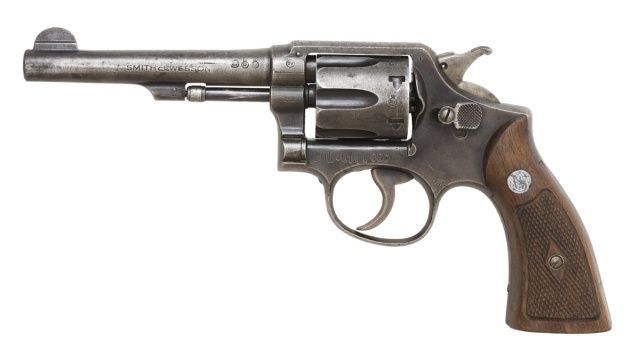
On a double-action revolver, pulling the trigger cocks the hammer and rotates the cylinder. This requires a long, heavy trigger pull. On a good revolver, the trigger pull will be smoother than a double-action semi-automatic. Unlike a DA/SA semi-auto, a double-action revolver will have the same trigger pull for every shot. Many revolvers give the shooter the option to cock the hammer manually (which also rotates the cylinder), giving it a much shorter, lighter, trigger pull for that shot.
As with semi-autos, revolvers come in a variety of sizes. However, the sizes and their names are not quite as standardized as semi-automatic pistols. One difference between revolvers and semi-automatics is that the length of the barrel can vary independently from the size of the rest of the gun. Generally speaking, larger framed guns will have longer barrels, but it is possible to have a large revolver with a very short barrel or a small revolver with a longer one.
Given their traditional role for backup and discreet carry, the most common self-defense revolvers are the smallest. Many only carry five shots, rather than the traditional six, and they have very short barrels, usually 2″ or less. Their grips are usually short enough that the pinky hangs down below the bottom of the gun. The Smith & Wesson J-frame revolvers are a classic example of the small revolver, while the Ruger LCR is a more recent, but popular, addition.
The maxim that smaller guns are more difficult to shoot holds true for revolvers as well. If anything, a small revolver is more difficult to shoot than a similarly sized semi-auto. They often have heavier trigger pulls and due to their design the sight radius will be shorter. Many small revolvers are made from very lightweight materials, like titanium, scandium, or polymer. These make them very light and easy to carry, but the recoil is proportionally greater. This is compounded by the fact that small, lightweight revolvers can be chambered in more powerful cartridges than a similarly sized semi-auto. Hot .357 Magnum loads in a scandium J-frame are a downright painful combination.

Medium sized revolvers are a bit easier to handle. The generally have grips long enough for all the fingers to gain purchase and they are seldom made out of the extremely lightweight materials seen in the smaller guns. This makes them heavier to carry, but much more pleasant to shoot. They usually carry a full six rounds, and their barrels are generally longer, in the 3-6″ range. Examples of medium size revolvers include the Smith & Wesson K- and L-frame revolvers and the Ruger SP101.
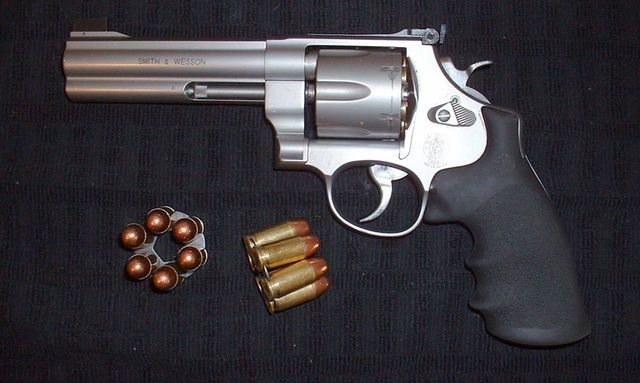
Unlike semi-automatics, where larger guns tend to carry more ammo, larger revolvers generally stick to the classic six rounds, instead chambering more powerful cartridges. These large, powerful revolvers are often used for hunting and defense against dangerous animals, but much of their extra power is wasted when it comes to self-defense against human opponents. There are some exceptions that increase the number of rounds in the cylinder to 7 or 8 rather than chambering a more powerful round. Examples of large revolvers include the Smith & Wesson N- and X-frame revolvers and the Ruger Super Redhawk and Alaskan.
There is one more type of revolver that bears mentioning, if only for cautionary reasons. In the past few years there has been a boom in large revolvers that can fire .410 shotgun shells and .45 Colt pistol cartridges. This trend was led by the Taurus Judge and recently Smith & Wesson has gotten in on the action with their Governor model. I do not consider any of these shotshell revolvers good tools for self-defense. The .410 bore shotgun is not particularly effective against human assailants (regardless of what it does to watermelons on youtube videos), particularly when fired through the short, lightly rifled barrel seen on these revolvers. This leaves .45 Colt as the most suitable self-defense load, but if you want to defend yourself with .45 Colt, you would be better served with a more conventional revolver chambered in that caliber.
Many people recommend a revolver for a new shooter, usually on the grounds of “simplicity”. As Gabe Suarez says, “A revolver is only simple for the first six shots.” Revolvers take as much, if not more, training to use well than a semi-automatic. Their heavier double-action trigger pull requires more time and effort to master than a point and shoot semi-auto. Reloading a revolver is a much more fiddly process that requires extensive practice to get right under pressure. All of this is doubly true for the small J-frame revolvers that are most commonly recommended. Their small size, short sight raidus, and heavy trigger pull make them guns for experts, not beginners.
If you insist on getting a revolver as your first handgun, I recommend a medium sized one: a K- or L-frame S&W or a similarly sized gun from another manufacturer like Ruger or Taurus.
Reliability
The fact that I have waited this long to mention reliability is not an indication of its importance. Indeed, reliability is the most important quality of any firearm you intend to use for self defense. The main reason I did not mention it sooner is that we live in a golden age of reliable handguns. Most firearms manufactured today are made on computer controlled machinery, capable of far greater precision and consistency than older manufacturing processes. Modern designs tend to be simpler and more robust. Finally, the internet has provided forum for feedback on firearm quality. If a manufacturer turns out junk, it won’t take long for everyone to know about it.
These days, you almost have to go out of your way to buy an unreliable gun. Almost all of the major manufacturers are putting out reasonably well designed and made products (all of the manufacturers I have mentioned by name in this article produce quality firearms). As long as you’re not buying complete, bottom of the barrel junk, it will probably be reliable. The one area where this may not be true is actually at the higher end of the market. Some guns made specifically for competition use tend to prize accuracy over reliability. If you’re shooting a competition, a malfunction might mean loosing the match. If you’re in a gunfight, a malfunction might mean loosing your life. Don’t assume that a gun made for competition is suitable for self-defense.
While most modern firearm designs are generally reliable, even the best manufacturer turns out a lemon now and then. If you’re going to trust your life, and the lives of your loved ones, to a particular gun you need to test it first. I want to have a minimum of 500 rounds through a firearm without any malfunctions before I trust my life to it. At least 50 of those rounds should be the ammunition I am planning on using for self-defense. To quote President Reagan, “Trust, but verify.”
Specific Pistols
Thus far I’ve mostly been speaking in terms of general characteristics like the type of operation and different sorts of controls, using a few specific pistols as examples. Lets get down to some actual recommendations on specific pistols. We’re looking for a compact or full size 9mm* semi-automatic pistol without a manual safety or decocking lever that fits your hand well (*I’ll talk more about caliber in the next installment).
The canonical example of the point and shoot semi-auto is the Glock pistol. There are many models, but the two that fit our size and caliber criteria are the Glock 17 and Glock 19 (the full size 9mm and compact 9mm, respectively). Glock pistols are simple, inexpensive, and have an extreme reputation for reliability. These features have led the Glock to become by far the most common handgun for police in America today. The pistol I trust my life to is a Glock.
The Glock’s weak point is the size of it’s grip. It generally works fine for people with average or larger sized hands, but some with smaller hands the Glock grip is just too large. Glock recently came out with their new 4th Generation models, which feature an interchangeable backstrap. While this helps, due to the design of the magazine even the smallest backstrap available is still too large for many people’s hands.
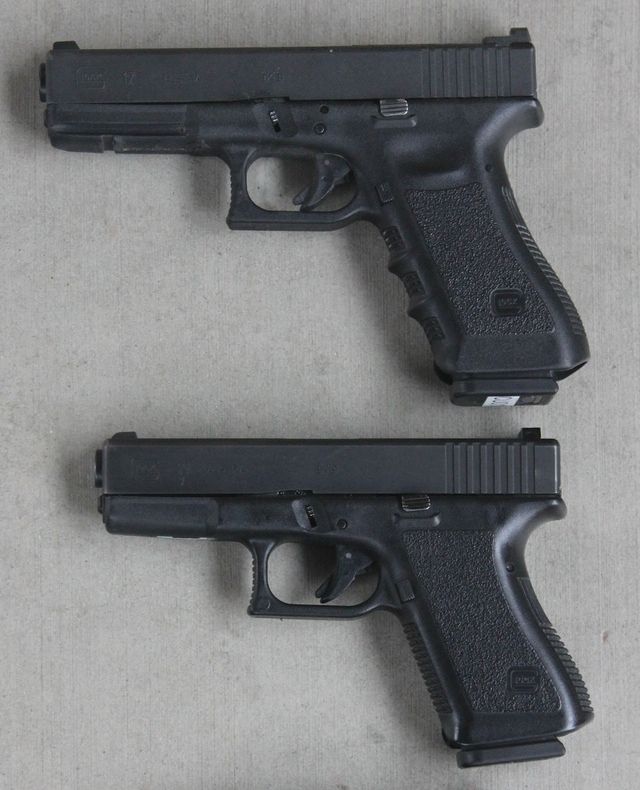
For those with smaller hands, the Smith & Wesson M&P semi-auto is an excellent choice. It popularized the interchangeable backstrap and with the smallest backstrap installed it is noticeably smaller than the Glock. The M&P is available with an external manual safety. For reasons explained above, this is undesirable on a carry gun, get the point and shoot version. Note that the “Compact” model of the M&P is actually a subcompact pistol. For most people I would recommend a model with a 4.25“ or 5” barrel.
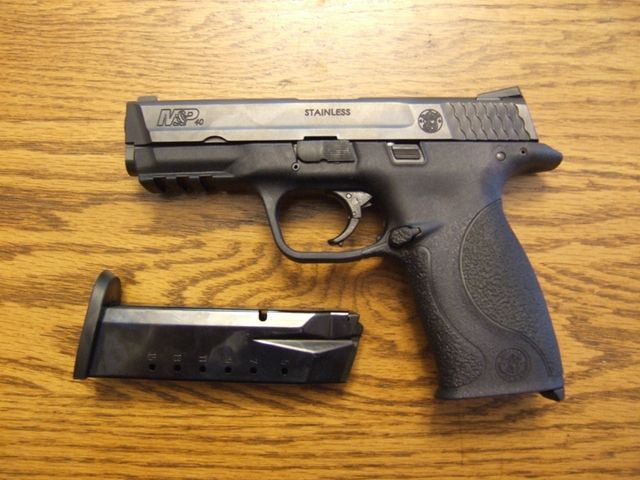
The other major competitor to the Glock is the Springfield XD. Springfield actually sells two distinct lines of pistols, the original Springfield XD, and the newer XDm. While they may appear similar, parts, including magazines, are not interchangeable between the two lines. Either model would make a fine pistol for self-defense. For our purposes, the biggest difference between the two is that the XDm has an interchangeable backstrap, making it a better choice for shooters with small hands.


The Glock, M&P and XD/XDm are the big three when it comes to point and shoot self-defense pistols. Anyone selecting their first pistol should examine these three at the very least. However, there are more options out there. Two in particular that I would mention are the Walther PPQ and the Steyr M9 and L9 pistols. Both of these are very nice, high quality pistols. In many ways they are arguably better than the Glock, M&P, or XD, though they are also more expensive. The other disadvantage is that it can be harder to find parts, magazines, holsters, and magazine carriers than for the more common types.
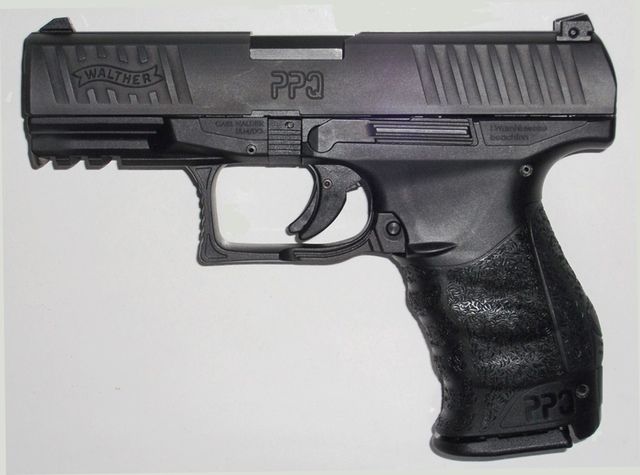

In addition to the point and shoot pistols listed above, there are also other manufacturers that offer a point and shoot action as one of several options on their pistols. Beretta sells a point and shoot version of their Px4 Storm pistol (the Px4C) along side DA/SA and DAO models. SIG offers the DAK trigger as a substitute for the standard DA/SA action on their classic line of pistols (P226, P228, and P229). The HK equivalent is the LEM trigger, available on their USP, P2000, and P30 pistols. Being modifications of more traditional designs, the trigger feel and operation of the DAK and LEM triggers are not quite as consistent as guns designed for point and shoot operation from the ground up. All three are high quality handguns. Like the Walther and Steyr, they are harder to find accessories for than the big three (with the SIG suffering from this a bit less than the Beretta or HK).
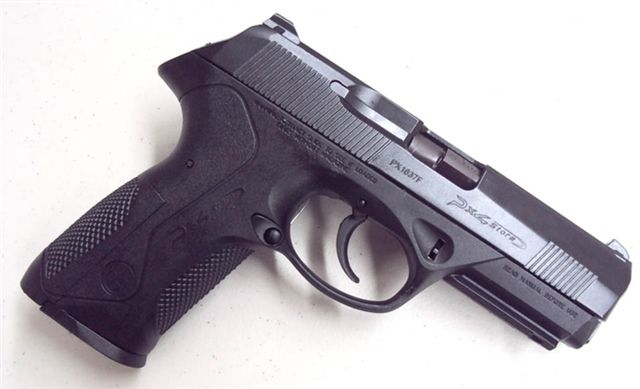
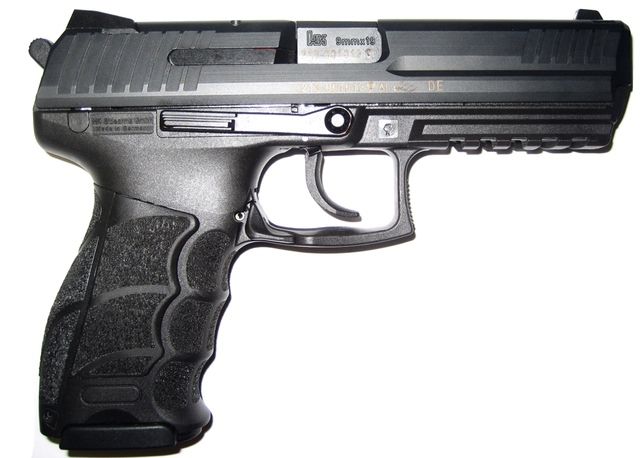
All of the pistols mentioned above have double stack magazines. For shooters with smaller hands who find even double-stack pistols with interchangeable backstraps too large, I would recommend a single-stack pistol. There are not as many good options for good single stack pistols, but there are some high quality pistols out there. For many years Kahr Arms has been producing very nice single-stack pistols. Their CW9, K9, P9, TP9, and T9 pistols are excellent choices. Another pistol I have successfully recommended to shooters with smaller hands is the Walther PPS (one of the few single-stack pistols with interchangeable backstraps).

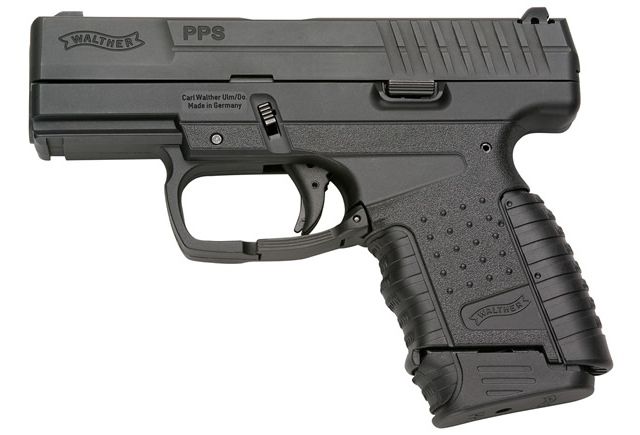
Summary
This has been a long article (longer than I anticipated when I started writing it). While I’ve gone into quite a bit of detail to explain the reasoning behind my recommendations and lay out the different options available, my advice to someone looking to buy their first pistol for self defense can be summed up fairly simply:
